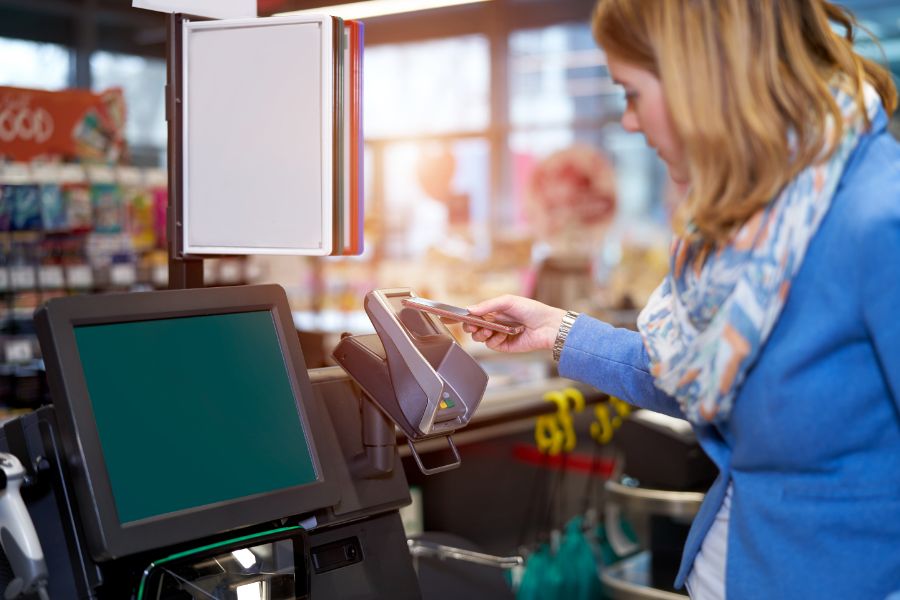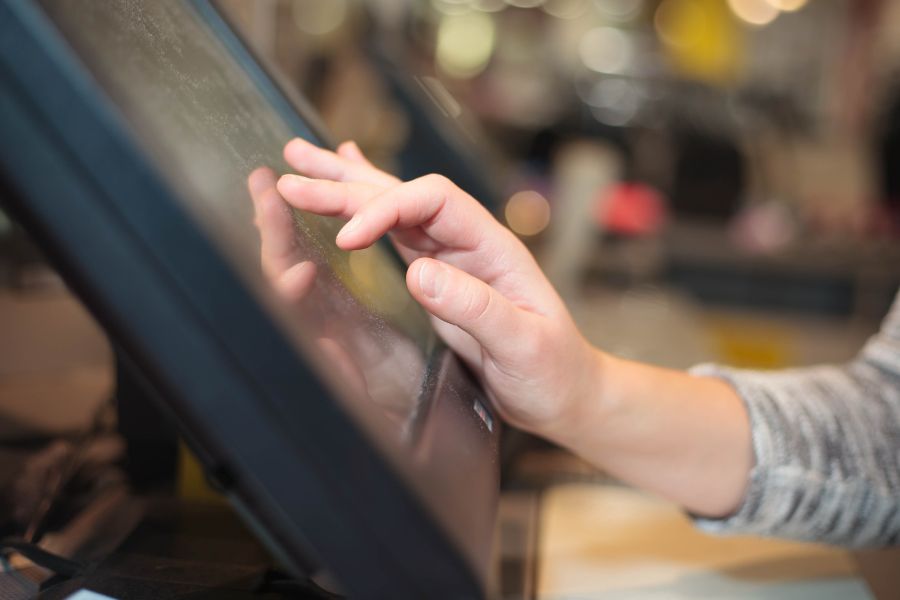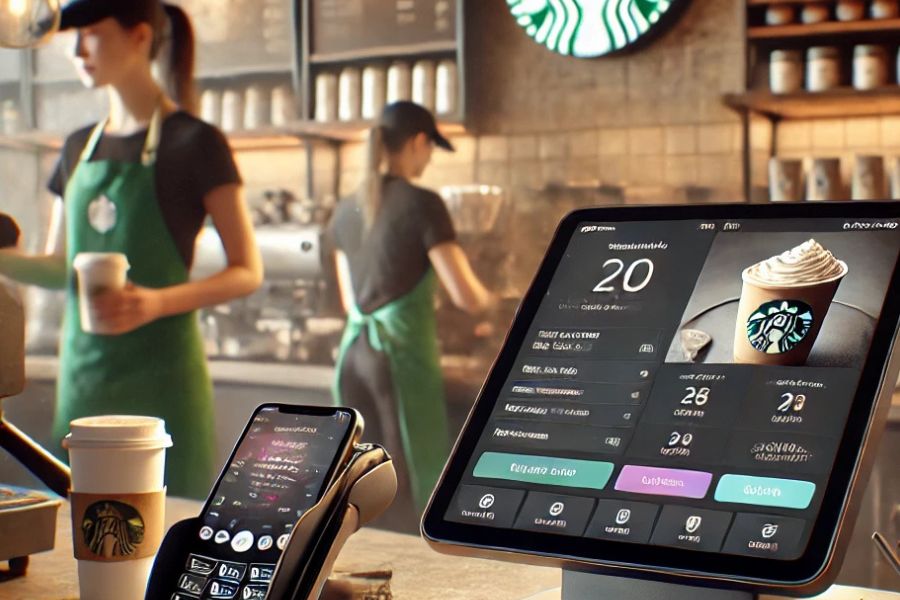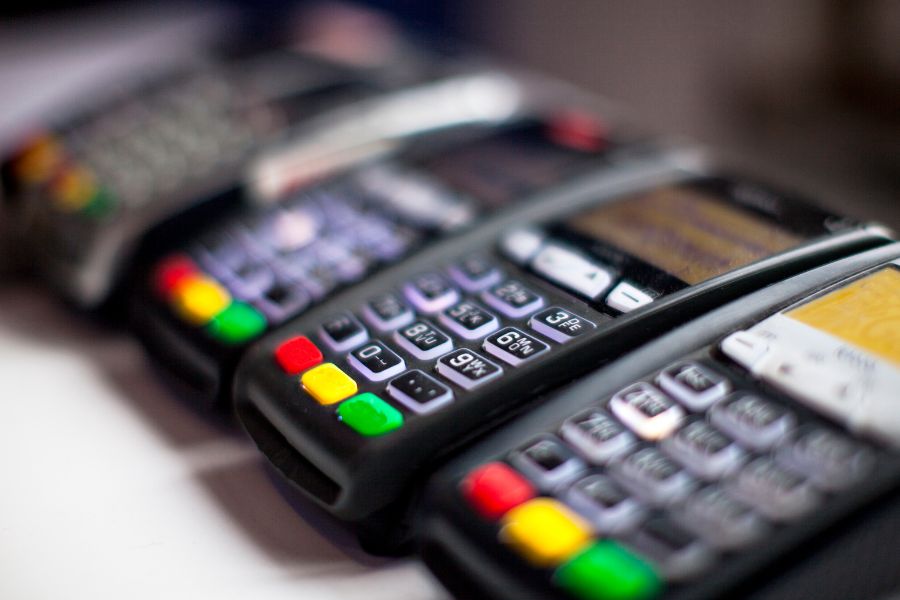In the dynamic landscape of modern retail, the indispensable role of point of sale (POS) systems for convenience stores cannot be overstated. The evolution of technology has empowered these systems to become pivotal catalysts for success. A POS system for convenience store is more than just a transaction tool; it’s a powerful engine driving operational efficiency, customer satisfaction, and overall business prosperity. In this exploration, we delve into the transformative impact and five key ways a robust POS system uplifts the success of convenience stores.
As we unlock the potential of POS systems for convenience stores, let’s navigate through the dynamic features that propel these establishments toward unprecedented success.
Definition of a POS system for convenience store
Definition: A point of sale (POS) system for convenience stores is a comprehensive software and hardware solution designed to manage and streamline various aspects of retail operations. It serves as the central hub for transaction processing, inventory management, and customer interactions, revolutionizing the way convenience stores operate.
Importance of a POS system for convenience stores:
Operational efficiency: streamlining day-to-day operations, a POS system reduces manual errors, accelerates transaction processes, and ensures a seamless workflow.
Enhanced customer experience: quick and efficient checkouts, personalized interactions, and loyalty programs contribute to an overall improved shopping experience, fostering customer satisfaction and loyalty.
Business insights: the system provides valuable data on sales performance, inventory turnover, and customer behavior, enabling store owners to make data-driven decisions for business growth.
Employee productivity: by automating routine tasks, a POS system frees up employee time, allowing them to focus on providing better customer service and contributing to increased overall productivity.
Adaptability to market changes: with real-time synchronization and automatic updates, a POS system enables convenience stores to adapt swiftly to market changes, ensuring they stay competitive and relevant.
Understanding how a POS system works: to grasp the functionality of a POS system for convenience store, consider it as the digital nerve center of the store. It starts with the scanning of products at the checkout, which triggers a chain of automated processes – from updating inventory to processing payments and recording customer data. The interconnectedness of these features ensures that the store operates smoothly, customers experience a hassle-free checkout, and businesses have access to crucial data for strategic decision-making.
5 Ways POS system for convenience store boosted success
Efficiency and streamlined operations
- Automation of sales transactions
Quick and accurate checkouts: the POS system automates the sales transaction process, ensuring rapid and error-free checkouts. Barcode scanning capabilities and integrated payment systems expedite the payment process, minimizing queues and enhancing customer satisfaction.
Multiple payment method support: a comprehensive POS system accommodates various payment methods, including credit cards, mobile payments, and cash. This flexibility not only caters to diverse customer preferences but also ensures a smooth and hassle-free transaction experience.
- Inventory management and restocking
Real-time stock tracking: the POS system continuously monitors and updates inventory levels in real time. This feature helps convenience stores keep track of product availability, preventing stockouts and ensuring that popular items are always in supply.
Automated reordering system: leveraging sales data and inventory levels, the POS system automates the reordering process. This not only reduces the chances of overstocking or stockouts but also optimizes inventory turnover, maximizing profitability.
- Reduction of human errors
Minimized transaction errors: Manual errors in transaction processing can be costly. The automation provided by a POS system significantly reduces the risk of errors in pricing, item codes, and calculations, ensuring accurate transactions.
Enhanced accuracy in inventory: traditional inventory management methods are prone to human errors. With a POS system, inventory counts are automated, minimizing discrepancies and providing a precise overview of stock levels.
Enhanced customer experience
- Quick and seamless checkout process
Swift transaction handling: a POS system expedites the checkout process, minimizing wait times and ensuring a seamless experience for customers.
Ultimate ConnectPOS integration: with the POS solution ConnectPOS, the checkout process becomes even more efficient. Its advanced features contribute to faster transaction processing, enhancing overall customer satisfaction.
- Integration with loyalty programs
Automated loyalty point accumulation: a POS system seamlessly integrates with loyalty programs, automatically awarding points for purchases without additional manual input.
Incentivized purchases: loyalty integration encourages repeat business as customers are motivated to accumulate and redeem rewards, fostering a loyal customer base.
- Personalized customer interactions
Access to customer data: POS systems store customer information, enabling personalized interactions based on purchase history, preferences, and demographics.
Tailored promotions: utilizing stored data, the system allows for targeted promotions, discounts, and recommendations, creating a more personalized shopping experience. These enhancements collectively elevate the customer experience, making each visit to the convenience store efficient, rewarding, and tailored to individual preferences. ConnectPOS, with its seamless integration, amplifies these benefits, making it a valuable addition to convenience store success.
Business data insights
- Sales analytics and reporting
Real-time sales data: a POS system captures and analyzes real-time sales data, providing convenience store owners with insights into their daily, weekly, and monthly sales performance.
Product performance analysis: detailed reports on individual product sales help identify top-performing items and optimize inventory based on customer demand.
Peak hour identification: sales analytics highlight peak business hours, allowing store owners to allocate resources effectively and enhance customer service during high-traffic periods.
- Inventory tracking for informed decision-making
Real-time stock updates: the POS system continuously updates inventory levels, ensuring accurate stock tracking and minimizing the risk of stockouts or overstocking.
Automated reordering: based on preset thresholds, the system automates the reordering process, streamlining supply chain management and preventing disruptions in product availability.
Vendor performance analysis: evaluate vendor performance through inventory data, helping convenience stores choose reliable suppliers and negotiate favorable terms.
- Forecasting and trend analysis
Demand forecasting: POS systems use historical sales data to forecast future demand, enabling convenience stores to anticipate customer needs and optimize inventory accordingly.
Trend identification: by analyzing purchasing trends, the system helps stores identify popular products, seasonal variations, and emerging consumer preferences.
Strategic planning: armed with forecasting and trend analysis, convenience store owners can strategically plan promotions, discounts, and product launches to capitalize on market trends.
Employee empowerment
- Staff training and onboarding
Centralized training platform: POS systems offer a centralized platform for staff training, enabling convenience store owners to create and implement standardized training modules for new hires.
User-friendly interfaces: the intuitive interfaces of POS systems make it easier for employees to learn the system quickly. This reduces the learning curve during onboarding, allowing staff to become proficient in their roles faster.
Real-time performance tracking: managers can track the progress of staff training in real-time, identifying areas where employees may need additional support or guidance. This data-driven approach ensures a more effective onboarding process.
- Mobile accessibility for floor assistance
Mobile POS(mPOS): a POS system with mobile accessibility allows employees to carry out transactions directly on the sales floor. This enhances customer service by reducing waiting times and providing a more personalized shopping experience.
Inventory management on the go: employees can use mobile devices with POS capabilities to check inventory levels, locate products, and provide real-time information to customers. This flexibility improves overall store operations.
Efficient queue management: mobile accessibility enables staff to process transactions from anywhere in the store, preventing long queues at the checkout counter during peak hours. This ensures a smoother shopping experience for customers.
- Improved communication and efficiency
Internal communication tools: many POS systems come equipped with communication features, such as messaging or notification systems. This facilitates seamless communication between employees and management, improving coordination and efficiency.
Task management: POS systems often include task management features that allow managers to assign specific responsibilities to employees. This ensures that tasks are distributed evenly, and everyone is aware of their responsibilities.
Performance metrics and feedback: the system provides performance metrics, allowing managers to provide constructive feedback to employees. This data-driven feedback loop helps in recognizing achievements and addressing areas for improvement.
Integration with e-commerce
- Online ordering and pickup
Convenient shopping experience: a POS system integrated with e-commerce allows customers to browse products online, place orders, and schedule pickups at their preferred convenience store. This convenience enhances the overall shopping experience.
Order accuracy and efficiency: online orders are seamlessly integrated into the POS system, minimizing the risk of errors associated with manual order processing. This ensures accurate order fulfillment and enhances operational efficiency.
Real-time inventory updates: as online orders are placed and processed, the POS system updates inventory levels in real-time. This synchronization prevents overselling and ensures that customers receive the products they order.
- Synchronization of in-store and online inventory
Unified inventory management: integration ensures that both in-store and online inventories are synchronized. This real-time visibility into stock levels prevents discrepancies and provides a consolidated view for effective inventory management.
Reduced stockouts: by synchronizing inventories, the POS system helps avoid stockouts by providing timely alerts for low stock levels. This feature is crucial for maintaining optimal stock levels and preventing disruptions in customer service.
Efficient order fulfillment: with synchronized inventory, orders placed online can be fulfilled directly from the convenience store’s stock. This minimizes delays in order processing and enhances the speed of order fulfillment.
- Multi-channel sales management
Centralized sales control: a POS system that integrates with e-commerce platforms allows convenience store owners to manage both in-store and online sales channels from a centralized system. This centralized control streamlines operations and ensures consistency.
Sales reporting and analytics: comprehensive sales data from both channels is consolidated, providing valuable insights into overall business performance. This data-driven approach aids in decision-making and strategic planning.
Improved customer engagement: multi-channel sales management enables consistent customer interactions across different platforms. Loyalty programs, promotions, and personalized offerings can be seamlessly integrated, fostering customer engagement and loyalty.
Frequently asked questions (FAQs) about POS systems for convenience stores
How does a POS system contribute to the efficiency of convenience store operations?
A POS system significantly enhances the efficiency of convenience store operations through its automation features. These features streamline various tasks, including sales transactions, inventory management, and error reduction. Automation minimizes manual errors, accelerates transaction processing, and ensures real-time tracking of inventory levels, ultimately optimizing the overall operational workflow.
Can a POS system enhance the customer experience in a convenience store?
Absolutely. POS systems are crucial in elevating the customer experience at convenience stores. They facilitate quick and seamless checkouts, reducing waiting times for customers. Integration with loyalty programs enables personalized promotions and discounts, fostering a sense of customer appreciation. Additionally, POS systems enable personalized interactions, allowing convenience stores to tailor their services to. In essence, a well-integrated POS system transforms routine transactions into personalized experiences, making customers feel valued and understood. This enhanced customer experience contributes significantly to customer satisfaction, loyalty, and the overall success of convenience stores in a competitive retail landscape.
What kind of business insights can a convenience store gain from a POS system?
POS systems provide convenience stores with valuable business insights through robust analytics tools. Sales analytics offer a comprehensive view of transaction patterns, popular products, and peak sales periods. Inventory tracking ensures real-time visibility into stock levels, preventing stockouts or excess inventory. Forecasting tools utilize historical data for trend analysis, aiding in informed decision-making regarding inventory management, marketing strategies, and overall business planning.
How does a POS system empower employees in a convenience store setting?
In a convenience store setting, a POS system empowers employees in several ways. It streamlines staff training and onboarding processes, reducing the time required for new employees to become proficient in using the system. Mobile accessibility enables floor assistance, allowing staff to assist customers anywhere in the store promptly. Improved communication features within the POS system contribute to enhanced teamwork and efficiency among store employees. Overall, a POS system enhances employee capabilities and contributes to a more productive work environment.
Conclusion
The narrative of success for convenience stores is intricately woven with the capabilities of a sophisticated POS system. The journey we’ve embarked on illuminates how these systems redefine efficiency, customer experience, data insights, and employee empowerment. To propel your convenience store towards unparalleled success, ConnectPOS stands as a beacon of innovation and excellence in the POS system for convenience store. If you want to know more about this information, feel free to contact us.
ConnectPOS is a all-in-one point of sale solution tailored to meet your eCommerce POS needs, streamline business operations, boost sales, and enhance customer experience in diverse industries. We offer custom POS with features, pricing, and plans to suit your unique business requirements.




